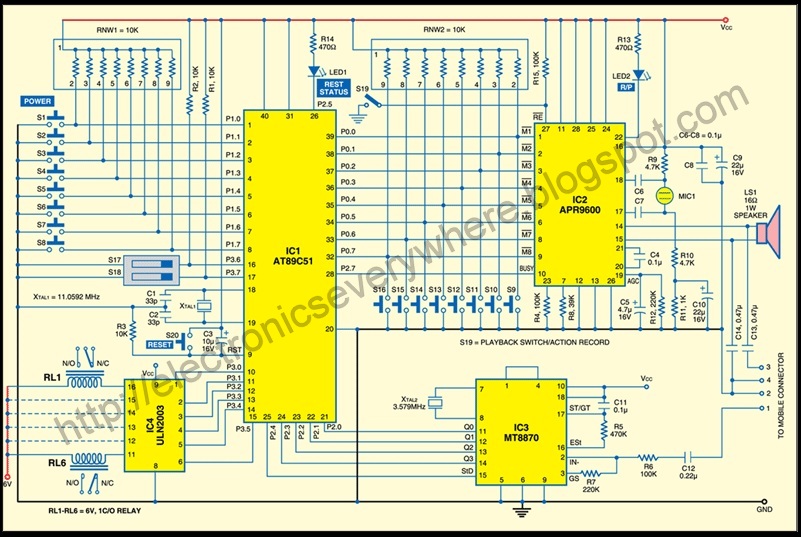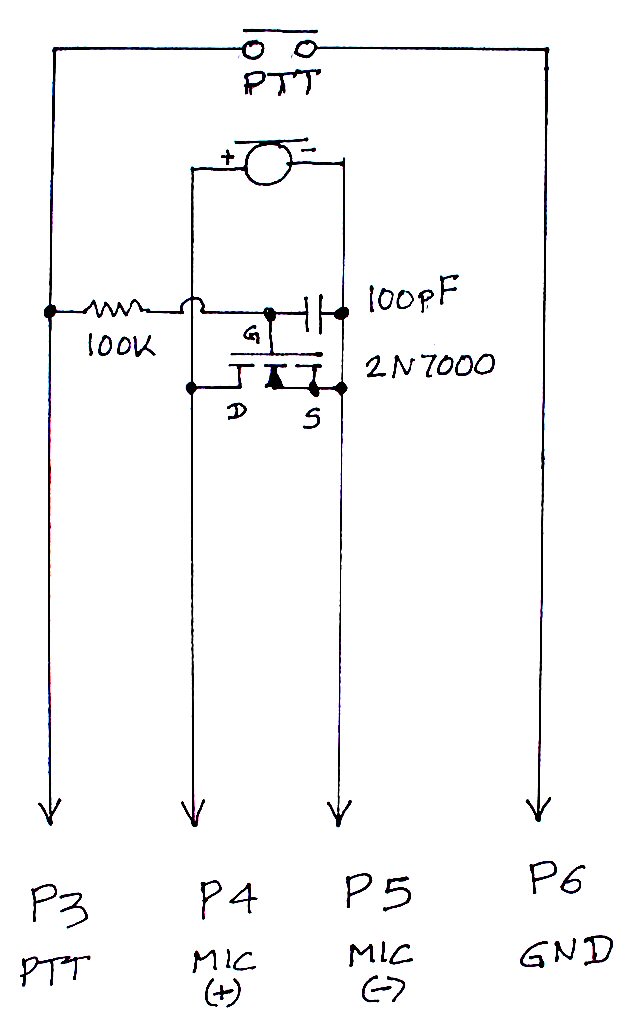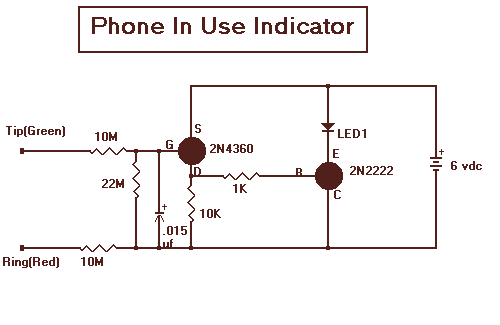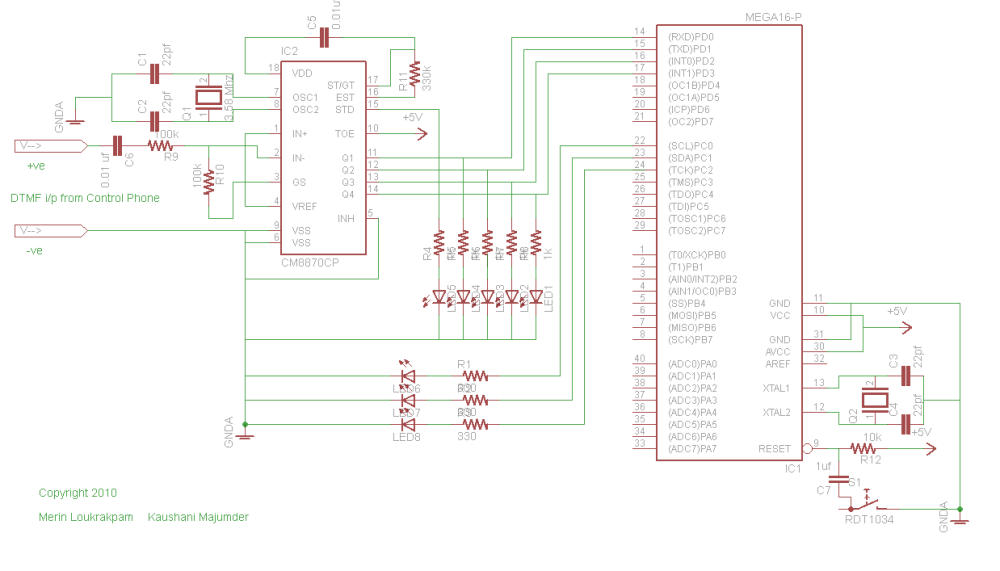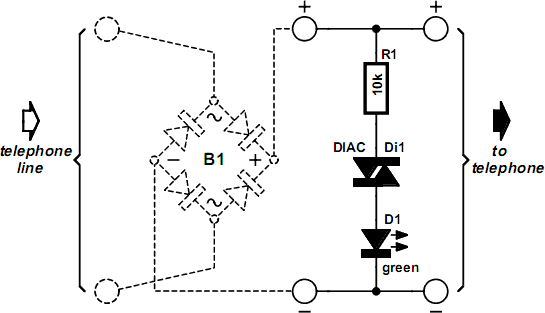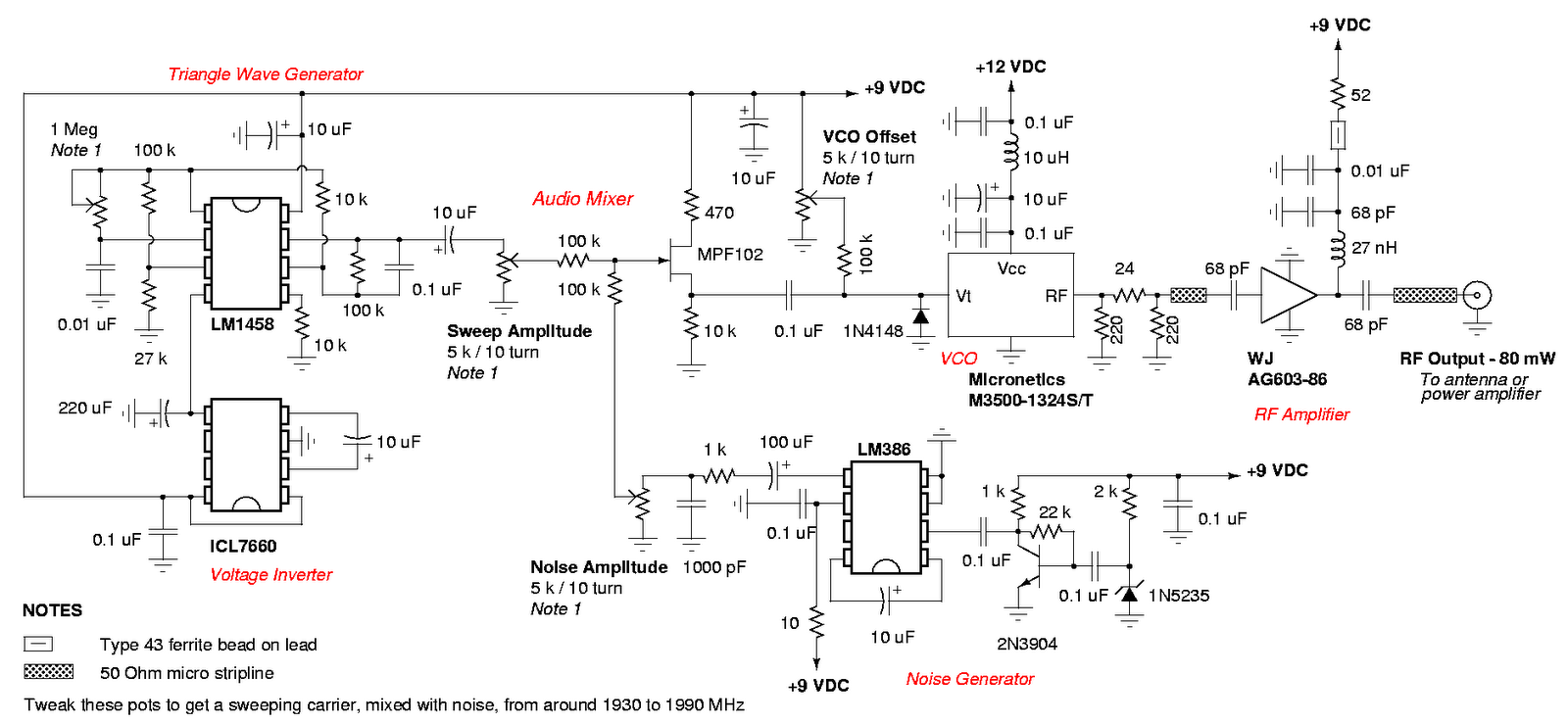
Extension Phone Ringer
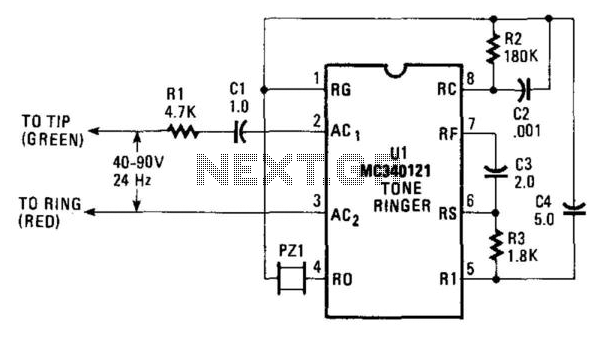
The AC ringing voltage, typically ranging from 40 to 90 V at 26 Hz, is rectified by U1, the tone-ringer integrated circuit (IC), which is utilized to drive the internal tone-generator circuitry. This tone-generator IC comprises a relaxation oscillator with a base frequency of 500, 1000, or 2000 Hz, along with frequency dividers that generate both high- and low-frequency tones, as well as the tone-warble frequency. An on-board amplifier outputs a 20 Vpp signal to the transducer.
The described circuit functions as a tone generation system, primarily for signaling purposes in communication devices such as telephones. The AC ringing voltage serves as the input signal, which is first processed by the rectifier component, U1. This component converts the AC voltage into a usable DC voltage for the tone-generator IC.
The tone-generator IC is equipped with a relaxation oscillator that produces a square wave signal at adjustable frequencies of 500, 1000, or 2000 Hz. This versatility allows for the generation of different tones based on the application requirements. The frequency dividers within the IC further manipulate the oscillator's output to create multiple tone outputs, including high-frequency and low-frequency tones, as well as a modulated tone known as tone-warble, which is often used to attract attention or indicate an incoming call.
The internal amplifier within the IC is designed to drive the transducer efficiently. The output signal, specified as 20 Vpp (volts peak-to-peak), indicates the amplitude of the signal delivered to the transducer. This transducer, which may be a speaker or piezoelectric element, converts the electrical signals into audible sound waves, producing the ringing tones that alert users.
In summary, this circuit represents a compact and efficient solution for generating audible tones in response to ringing signals, utilizing a combination of rectification, oscillation, frequency division, and amplification to achieve the desired output for signaling applications. The ac ringing voltage (typically 40 to 90 V at 26 Hz) is rectified by U1, the tone-ringer IC, and is used to drive that IC"s internal tone-generator circuitry. The tone-generator IC includes a relaxation oscillator (with a base frequency of 500,1000, or 2 000 Hz) and frequency dividers that produce the high- and low-frequency tones, as well as the tone-warble frequency. An on-board amplifier feeds a 20-Vpp signal to the transducer.
The described circuit functions as a tone generation system, primarily for signaling purposes in communication devices such as telephones. The AC ringing voltage serves as the input signal, which is first processed by the rectifier component, U1. This component converts the AC voltage into a usable DC voltage for the tone-generator IC.
The tone-generator IC is equipped with a relaxation oscillator that produces a square wave signal at adjustable frequencies of 500, 1000, or 2000 Hz. This versatility allows for the generation of different tones based on the application requirements. The frequency dividers within the IC further manipulate the oscillator's output to create multiple tone outputs, including high-frequency and low-frequency tones, as well as a modulated tone known as tone-warble, which is often used to attract attention or indicate an incoming call.
The internal amplifier within the IC is designed to drive the transducer efficiently. The output signal, specified as 20 Vpp (volts peak-to-peak), indicates the amplitude of the signal delivered to the transducer. This transducer, which may be a speaker or piezoelectric element, converts the electrical signals into audible sound waves, producing the ringing tones that alert users.
In summary, this circuit represents a compact and efficient solution for generating audible tones in response to ringing signals, utilizing a combination of rectification, oscillation, frequency division, and amplification to achieve the desired output for signaling applications. The ac ringing voltage (typically 40 to 90 V at 26 Hz) is rectified by U1, the tone-ringer IC, and is used to drive that IC"s internal tone-generator circuitry. The tone-generator IC includes a relaxation oscillator (with a base frequency of 500,1000, or 2 000 Hz) and frequency dividers that produce the high- and low-frequency tones, as well as the tone-warble frequency. An on-board amplifier feeds a 20-Vpp signal to the transducer.
